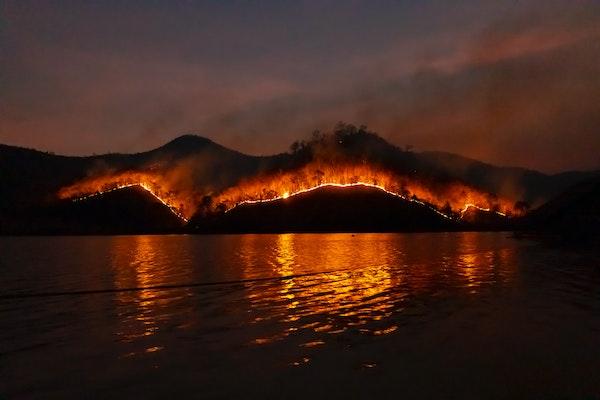Regional Wildfire Trends and Fire Danger: The Interplay between Local Factors and Oceanic Teleconnections

In recent years, tropical region wildfires have become increasingly severe, resulting in more burned areas. Research published in Science of The Total Environment, studied the effects of oceanic teleconnections on wildfires. This study was authored by Flavio Justino from Universidade Federal de Vicosa, Brazil, in collaboration with a team of international researchers including Byrd Center's Research Professor David Bromwich, and Research Associate Sheng-Hung Wang at The Ohio State University.
Researchers studied the influence of oceanic climate modes and their teleconnections on global fire danger and trends in the 1980-2020 interval. The goal was to understand the underlying factors contributing to this trend and to develop better strategies for predicting and managing wildfires.
The findings demonstrated that increases in temperature in extratropical regions are primarily responsible for the rise in wildfire activity. In the tropics, however, changes in short-term precipitation distribution dominate the trends. Furthermore, the impact of short-term precipitation is dependent on local vegetation type and is closely related to oceanic temperatures far from the burned areas. For example, a warmer tropical North Atlantic in the 2001-2020 period was associated with more fires in the Amazon and Africa. On the other hand, the El Niño-Southern Oscillation (ENSO) weakened fire activity in equatorial Africa.
The study emphasized the remarkable impact of oceanic modes of climate variability on inducing environmental conditions that are conducive to fires. This is particularly relevant for seasonal spatiotemporal wildfire forecasts. Although local aspects are crucial for fire management, long-term predictions should take into account the behavior of potential climate drivers located far from the region of interest. Such teleconnections can be identified ahead of local weather anomalies.
The research findings suggest that wildfire management strategies should not only focus on local conditions but also take into account global climate patterns. By better understanding the influence of oceanic climate modes on wildfire activity, researchers can develop more accurate predictions and more effective strategies for managing and mitigating the risks associated with wildfires.
Visit the publication to read more about this study or download the pdf here.
